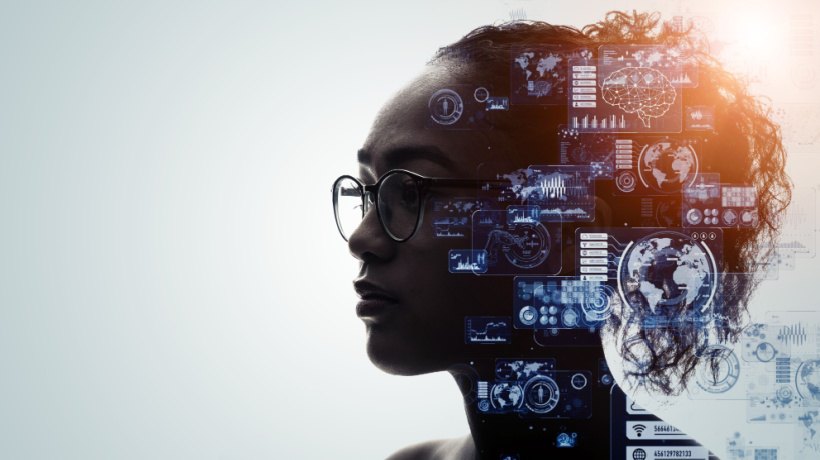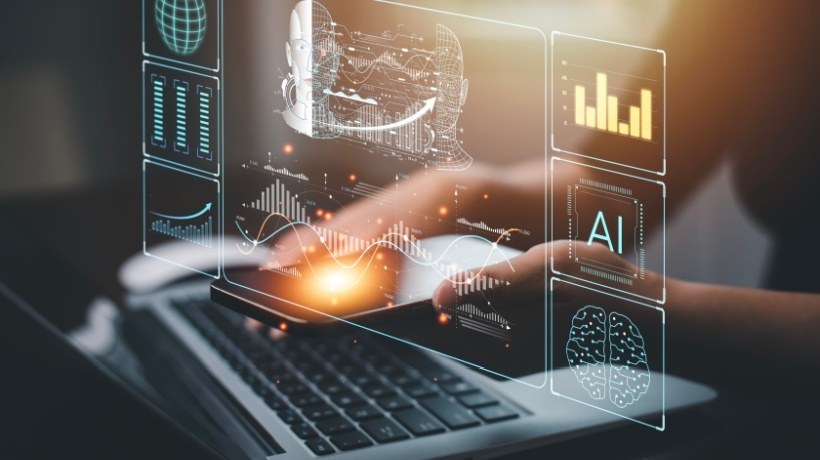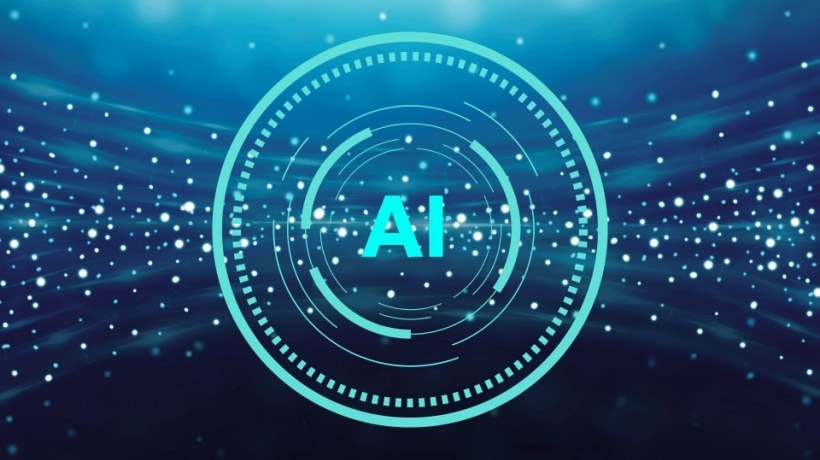Why Is AI So Relevant In eLearning Today?
Artificial Intelligence, or AI, as we call it, is everywhere. It's in our phones, cars, and even in the apps we use to learn new things. Undoubtedly, one area in particular where AI is making a huge difference is in education, especially eLearning. Today, we learn in an entirely different way than decades ago. Thanks to AI, eLearning offers personalized lessons, instant feedback, and even chats with AI-powered tutors. Beyond the content, AI is helping educators, too. It can grade assignments, analyze learner data to spot trends, and even suggest ways to improve courses. This allows teachers and trainers to focus on connecting with students rather than dedicating most of their time to repetitive tasks.
But how did this all start? When did AI get so powerful that it became such a vital part of education and eLearning? Let's go back to when it was created and see how it evolved to make its way into classrooms, both physical and digital.
In This Article...
- The History Of AI Implementation In Education And eLearning
- The Creation Of AI
- The First EdTech Tools
- Intelligent Tutoring Systems (ITSs)
- Learning Management Systems (LMSs)
- Adaptive Learning
- Natural Language Processing (NLP)
- Massive Open Online Courses (MOOCs)
- Deep Learning
- Generative AI
- AI In Corporate Learning
- Conclusion
- Further Reading
The History Of AI Implementation In Education And eLearning
1950s & 1960s
The Creation Of AI
In 1950, Alan Turing asked a simple question in his paper "Computing Machinery and Intelligence": Can machines think? [1] To explore this, he introduced the Turing Test, a way to evaluate whether a machine's responses are the same as a human's in a conversation. In this test, a person judges a text conversation between a human and a machine. The evaluator's job is to figure out which is which, and the machine passes if the evaluator cannot tell them apart. The results depend on how closely the machine's responses resemble a human's, not on whether it answers questions correctly. This opened the way for an important aspect of AI in education and eLearning, which is interaction.
As AI research grew in the 1950s and 1960s, scientists focused on symbolic AI, or rule-based systems. These were early AI models that followed strict rules to make decisions, such as "point A leads to point B." This is what created the idea of a machine "thinking" about problems. Then, in 1966, Joseph Weizenbaum from MIT created ELIZA, the first conversational AI. She was designed to act like a therapist by using basic pattern-matching to have typed conversations. For example, if someone typed, "I feel sad," ELIZA would respond, "Why do you feel sad?" However, ELIZA didn't really understand words. That didn't stop people from connecting emotionally with her, though. Despite that, ELIZA showed that machines could "talk" to learners, making interactions engaging and even motivating. This inspired early ideas about how computers could help with learning through conversation. Although ELIZA wasn't widely used in schools, she led to research into tutoring systems and AI-driven conversations in education.
The First EdTech Tools
While AI was being developed, Educational Technology (EdTech) was also being researched. In the 1950s, B.F. Skinner, a behavioral psychologist, invented the teaching machine. Basically, the device automated and individualized instruction so that students could learn at their own pace. Students worked through materials step by step and received instant feedback on their answers. For instance, they answered a question, got it right, and moved on. If they got it wrong, they tried again. The goal of Skinner's device was to make learning active, and although it was popular in some groups, it lacked personalization.
Next came PLATO, a system launched in the 1960s by the University of Illinois and created by Don Bitzer, an Early Childhood Education professor. PLATO (Programmed Logic for Automatic Teaching Operations) was a computer-assisted instruction system that ran on large mainframe computers. Students typed answers on screens while the system provided lessons in subjects like math, languages, and music. PLATO introduced many concepts leveraged by eLearning today, including forums, instant feedback, online quizzes, and even games. Interestingly, it was used not only by learners in schools and universities but also by prison inmates.
1980s & 1990s
Intelligent Tutoring Systems
By the 1980s, AI had started to enter classrooms, not in the way we know now, but as Intelligent Tutoring Systems, or ITSs. An ITS is a program that uses AI to act as a personal tutor. Instead of teaching everyone the same way, an ITS adjusts to each student's pace, knowledge, and errors. It even gives personalized feedback. A big invention of the ITS research was the development of the LISP Tutor, [2] which was quite successful in boosting student performance. Created back in 1983, this program was designed to help students learn the LISP programming language. The LISP Tutor could spot mistakes and give helpful feedback while students worked on exercises. It even helped them finish tasks faster and improved their test scores. Around the same time, other ITS programs started developing, like TUTOR, [3] made by Logica in 1984 as a general teaching tool, and PARNASSUS, [4] developed at Carnegie Mellon University in 1989, specifically for language learning.
Despite their limitations, these systems introduced the idea that learning can be active and personalized. Just like AI-powered eLearning platforms do now, the ITSs back then collected data about how students performed and built a "digital profile" for each student. Using simple Machine Learning, the system predicted what help a student might need next and adjusted the content and support accordingly. This was an early example of adaptive learning.
1990s & 2000s
Learning Management Systems
In the 1990s, the Learning Management System (or LMS) started making its way into education. Unlike ITSs, LMS platforms didn't pretend to be tutors. They focused on organizing content, tracking progress, and managing everything around online education. These platforms made it possible to move entire classrooms onto the web and made teachers' lives a whole lot easier. One of the first LMSs was FirstClass, developed in 1990 by Soft Arc. The Open University in the UK used this system back in the '90s and 2000s to deliver online learning all over Europe, and it was one of the first internet-based LMSs. The first full-featured LMS was called EKKO, and was developed by Norway's NKI Distance Education Network and came out in 1991. [5] Then, in 1997, Blackboard was introduced, becoming one of the first major LMS platforms for universities in the US. A few years later, in 2002, Moodle emerged as an open-source option that became popular with schools and organizations looking for something more flexible and customizable.
Most LMSs then used basic automation rules. For example, if a student took a multiple-choice quiz, the system could grade it right away. If their attendance dropped below a certain level, the platform alerted them. While these features seem simple, they helped pave the way for more advanced analytics later on. Over time, LMS platforms started using smarter tools, like predictive analytics to identify students who may need help and recommendation systems to suggest helpful resources.
Adaptive Learning
Up to the 2000s, learning was generic, and while it worked fine, it didn't work for everyone. That's because students learn and progress differently from one another. Adaptive learning came as a solution, promising a more personalized, flexible experience that could adjust in real time to a learner's needs. How does it work? With data. These systems monitor how a learner interacts with content, which topics they struggle with, and more. Then, using algorithms and AI, the system adjusts the learning experience, either by skipping courses if the learner finds them too easy or by revisiting others if the learner needs more time to process the material.
One of the first companies to explore this approach was Knewton, founded in 2008. It became popular by partnering with education publishers to create personalized digital courses. Knewton used adaptive learning technology to find each student's strengths and weaknesses. The platform tagged concepts at specific levels, offering personalized recommendations based on what each student knew and needed. Another trailblazer in the adaptive learning field was DreamBox in 2006. It began as an adaptive math program for K–8 students and used real-time student data to adapt lessons automatically. For instance, when a student needed more visual explanations or a slower pace, DreamBox changed the content on its own.
Natural Language Processing
As adaptive learning advanced, another branch of AI entered education: Natural Language Processing (NLP). If you haven't read our extensive AI glossary yet, NLP is the part of AI that deals with understanding and working with human language, written or spoken. In the eLearning world, NLP allowed AI to understand language, changing how students interacted with learning platforms. One of the first applications of NLP in education was automated essay grading. Thanks to this, students could get instant feedback on their writing without waiting for a teacher to grade their papers. Then came AI-powered chatbots, which became a part of more and more eLearning platforms. These bots could answer frequently asked questions, guide users through course navigation, or even offer hints and tips.
Some platforms leveraged this further by adopting voice- and text-based interfaces. Language learning apps like Duolingo or mobile tutoring platforms now allow students to speak their answers or ask questions in natural language. This makes learning more intuitive, especially for younger students or those with accessibility needs. The best part is that all of these tools created up to that point started complementing each other. Suddenly, more and more LMSs now incorporated adaptive learning, chatbots, or AI-powered self-paced learning, taking the eLearning experience to another level.
2010s
Massive Open Online Courses
In the early 2010s, the internet made education accessible for all. Suddenly, anyone with a laptop and Wi-Fi could enroll in courses from universities located on the other side of the planet, all from their couch, office, or local coffee shop. This was made possible by the rise of Massive Open Online Courses (MOOCs). These courses allow unlimited participation and open access via the internet. They include traditional materials like filmed lectures, readings, and problem sets, but many also offer interactive features like user forums and social media discussions, which help connect students with professors and teaching assistants. That's why they were so popular for eLearning; they allowed everyone to participate and receive immediate feedback, no matter the distance. MOOCs became very popular in 2012, a year often called the "Year of the MOOC." [6] Although revolutionary, MOOCs presented a challenge: How do you offer a course designed for 30 people to an audience of 30,000 learners? The solution to that was AI.
AI helped make mass education possible without ruining the learner's experience. For example, AI provides automated grading systems, which evaluate responses, offer instant feedback, and even guide learners to resources tailored to their mistakes. AI could also give learners content recommendations. The AI algorithms in MOOCs started analyzing learner behavior, such as videos watched, quizzes learners struggled with, and where they dropped off, and used that data to personalize the learning path.
Deep Learning
Over the years, AI has become smarter due to deep learning and larger data sets. This led to platforms using predictive analytics to help learners in new ways. One example is dropout risk detection. Online courses often have high dropout rates, as many students start with excitement but then quit. However, AI can identify patterns that show who might drop out. It looks at data like how often students log in, whether they pass quizzes, or if they participate in discussion boards. With this information, the platform can send reminders or encouragement when students need it.
Another development is Emotion AI, a technology that tries to read emotion. [7] Some advanced systems use facial recognition, typing patterns, voice tone, or even mouse movement to determine if a learner is bored, frustrated, or confused. Although this technology is still developing, it could create more empathetic eLearning environments that respond not only to knowledge levels but also to feelings.
2020s
Generative AI
After 2020, we experienced the rise of generative AI. Generative AI focuses on creating new content, such as text, images, audio, video, and even code, based on patterns it's learned. In 2022, OpenAI launched ChatGPT, making AI popular. Students, teachers, Instructional Designers, and many professionals could use a tool that could write essays, explain difficult topics, or even role-play as historical figures. But what made ChatGPT and similar tools like Google's Gemini special was not just that they sounded smart. They could communicate naturally, understand context, and adapt to what users needed.
This newfound interaction with AI led to personalized tutoring. ChatGPT started being used as a tutor, answering questions, grading assignments, and explaining every subject. For learners, especially those in remote areas or with limited access to resources, this has created incredible opportunities. However, AI can make mistakes. Sometimes, these tools "hallucinate" facts [8] or provide outdated or incorrect information. So, learners must use them with moderation and always fact-check their responses.
AI In Corporate Learning
Corporate learning has significantly improved with AI, especially after the pandemic. Companies now use eLearning for everything, from onboarding new employees to training their leaders. For instance, if you're a new employee at a global tech company, you won't have to watch training videos for hours. Instead, you'll use an AI platform that creates a personalized onboarding experience for you. Similarly, if you need to improve your cybersecurity skills, AI can assess your current knowledge and suggest specific short courses or simulations. The result? This tailored approach benefits both learners and businesses. When employees learn exactly what they need when they need it, they are more likely to remember the information and apply it effectively at work. Hence, they become more productive, and companies gain more profit.
Conclusion
AI and eLearning work really well together. When used the right way, AI can enhance learning instead of replacing the personal touch that teachers provide. Sure, AI-powered eLearning platforms can customize lessons, reduce teachers' workloads, and assist students in real time. But with all these tools, we need to be careful. We've got to secure student data, monitor AI, and find the right balance to ensure that AI in education stays a positive tool.
Further Reading:
[1] "Computing Machinery and Intelligence," Alan Turing, 1950
[3] A new intelligent tutoring system, Lindsay Ford, 2008
[4] Introduction: Intelligent Computer-Assisted Language Instruction, Bailin & Levin, 1989
[5] The NKI Internet College: A review of 15 years of delivery of 10,000 online courses









